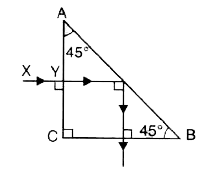
A ray of light XY passes through a right angled isosceles prism as shown alongside Figure.
(a) What is the angle through which the incident ray deviates and emerges out of the prism?
9b) Name the instrument where this action of prism is put into use.
(c) Which prism surface will behave as a mirror ?
The angle through which the incident ray deviates and emerges out of the prism is 90∘.
Topper's Solved these Questions
Similar Questions
A ray of light XY passes through a right angled isosceles prism as shown alongside.
What is the angle through which the incident ray deviates and emerges out of the prism ?
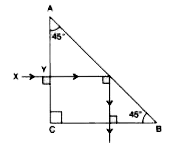 View Solution
View SolutionA ray of light XY passes through a right angled isosceles prism as shown below.

What is the angle through which the incident ray deviates and emerges out of the prism?View Solution
Knowledge Check
- Question 1 - Select One
A total reflecting right angled isosceles prism can be used to deviate a ray of light through :
A30∘B60∘C75∘D90∘
A ray of light XY passes through a right angled isosceles prism as shown alongside.
Which prism surface will behave as a mirror ?
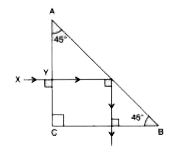 View Solution
View SolutionA ray of light XY passes through a right angled isosceles prism as shown below:

Which prism surface will behave as a mirror ?View SolutionA ray of light XY passes through a right angled isosceles prism as shown alongside.
Name the instrument where this action of prism is put into use.
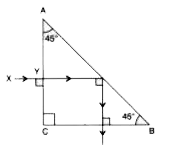 View Solution
View SolutionA ray of light XY passes through a right angled isosceles prism as shown below.
Name the instrument where this action of prism is put into use.View SolutionA ray of light PQ is incident normally on the hypotenuse of a right angled prism ABC as shown in the diagram given below:
What is the value of the angle of deviation of the ray ?
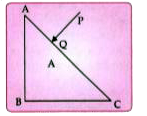 View Solution
View SolutionA ray of light PQ is incident normally on the hypotenuse of a right angled prism ABC as shown in the diagram.

Name an instrument where this action of the prism is used.View SolutionA ray of light passes through an equilateral glass prism in such a manner that the angle of incidence is equal to the angle of emergence and each of these angles is equal to 3/4 of the angle of the prism. The angle of deviation is
View Solution

